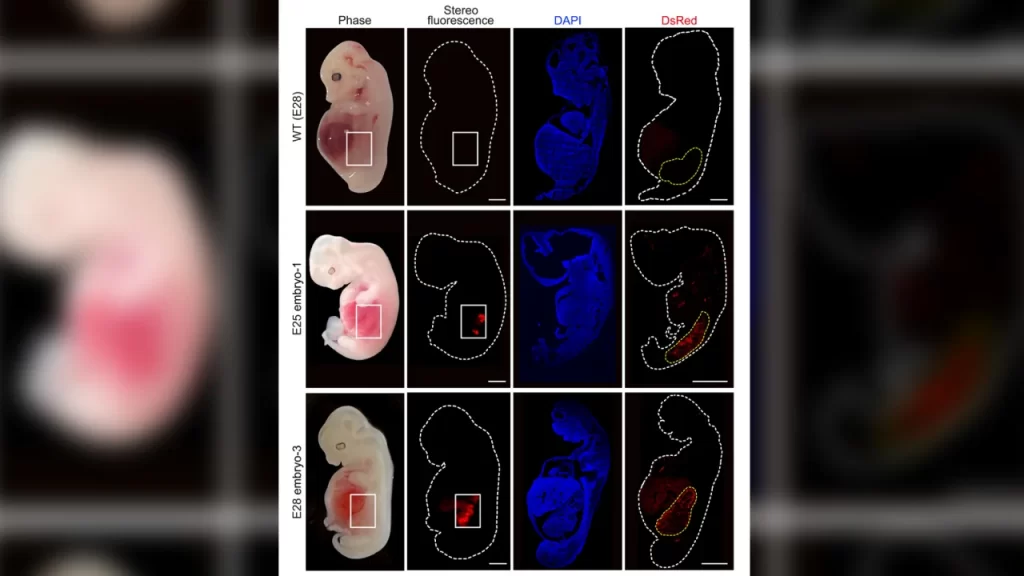Researchers Harness Human Stem Cells to Initiate Kidney Development in Porcine Embryos
The recent exploration into human kidney growth in pigs has yielded groundbreaking findings. Using a method known as embryo complementation, scientists successfully injected human-induced pluripotent stem cells (iPSCs) into nephric-defective pig embryos.
A Novel Approach to Organ Transplant Shortages
The ever-present demand for organ transplants, particularly kidneys, drives the medical community to devise innovative solutions.
Generating human-compatible organs in animals, particularly large mammals like pigs, could present an attractive alternative to address organ shortages. This would also potentially overcome challenges related to immune rejection, which is prevalent in conventional organ transplants.
The Techniques Behind Interspecies Kidney Development
Imagine a process similar to adding a glow-in-the-dark sticker on an object, so you can easily identify it even in a crowded space. In the realm of scientific research, scientists used a similar tactic but on a microscopic level.
They started with special human cells known as iPSCs (induced pluripotent stem cells). These cells have the unique ability to turn into almost any type of cell in the human body. To easily spot these cells, scientists equipped them with a special ‘glow’ by labelling them with a red fluorescent protein, effectively turning them into “DsRed+” cells. Think of this red glow as the unique mark that helps identify these cells amongst millions of others.
With these glowing iPSCs in hand, researchers introduced them into pig embryos. But not just any pig embryos. They specifically selected embryos that had difficulty developing kidneys on their own, akin to a plot of land that’s barren and awaiting seeds to be planted.
Once these glowing human cells were inside the pig embryos, the embryos started growing. The red fluorescent glow – which signifies the human cell’s contribution – was prominently seen in areas where the kidneys were forming. This was a clear indication that the human cells were actively participating and aiding in the development of the pig’s kidney.
Beyond Kidneys: The Wider Impact of Human Cell Injection
The fascinating journey of science often leads to discoveries that transcend the primary focus of research. In this groundbreaking study centred around kidney development, scientists unearthed revelations that extended beyond the renal realm.
While the kidney was the star of this research tale, it wasn’t the only organ to witness the integration of human cells. Several other vital organs within the pig embryos also played host to these unique cells. The heart also showed traces of human cells. This opens up an array of possibilities for future research into understanding heart diseases and potential treatments.
Similarly, the liver, a crucial organ responsible for detoxifying our bodies and metabolising drugs, revealed evidence of human cell presence. This suggests potential avenues for exploring how human cells can influence liver functions and perhaps offer insights into battling liver diseases or optimising drug treatments.
Most intriguingly, traces of human cells were found within the central nervous system of the pig embryos. The central nervous system, comprising the brain and spinal cord, is the control centre for all bodily functions. The integration of human cells here raises profound questions: Could this pave the way for advanced research into neurodegenerative diseases like Alzheimer’s and Parkinson’s? Or could it offer insights into brain injuries and potential regenerative treatments?
While these findings were indeed minimal compared to the kidney’s development, they shed light on a vast landscape of potential medical and scientific advancements. What this essentially underscores is that the blending of human cells within other species could be a key that unlocks doors to numerous therapeutic innovations, pushing the boundaries of what we once deemed possible.
Ethical Implications of Growing Human Kidneys in Pigs
With the excitement of this scientific achievement comes an intricate web of ethical dilemmas. A significant concern is the potential human stem cell contribution to neural and germline cell lineages in the pigs.
The broader implications of this cannot be understated, as these cellular contributions could influence the brain and germ cells. It becomes essential to monitor and, if necessary, limit such contributions in future research, ensuring that the pigs’ development remains centred on the target organ.
The Future Potential of Kidneys Grown in Animal Hosts
This research has profound implications. If the medical community can effectively harness this technology, we could enter a new era where interspecies organ generation meets the demand for organs. However, like any new medical approach, we must address many challenges, from method efficiency to ethical considerations.
As we move forward, refining this technique and addressing associated challenges, there is hope. The ability to potentially produce human-compatible organs within large mammals not only addresses the immediate concern of organ shortages but also offers a deeper understanding of cellular biology and interspecies interactions.
References
- Wang, J., Xie, W., Li, N., Li, W., Zhang, Z., Fan, N., Ouyang, Z., Zhao, Y., Lai, C., Li, H., Chen, M., Quan, L., Li, Y., Jiang, Y., Jia, W., Fu, L., Mazid, M. A., Zhu, Y., Maxwell, P. H., . . . Lai, L. (2023, September). Generation of a humanized mesonephros in pigs from induced pluripotent stem cells via embryo complementation. Cell Stem Cell, 30(9), 1235-1245.e6. https://doi.org/10.1016/j.stem.2023.08.003
Image courtesy of study

